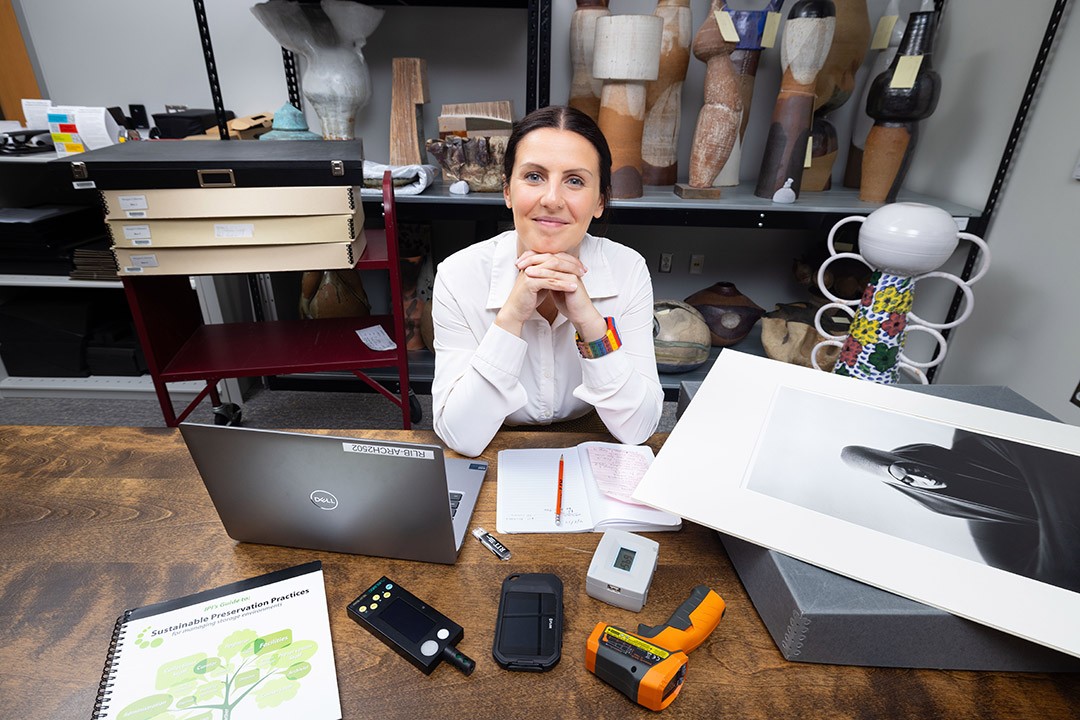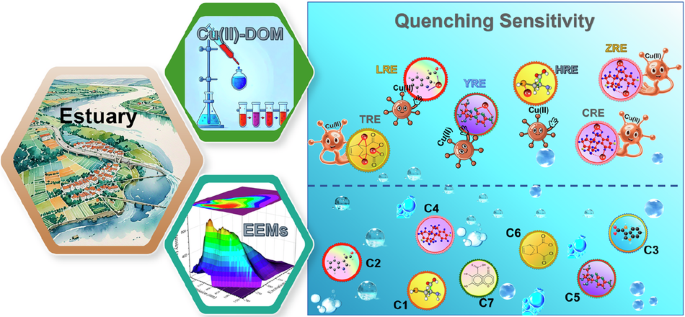Report on Sustainable Preservation Practices and Alignment with UN Sustainable Development Goals
Executive Summary
The Image Permanence Institute (IPI) at the Rochester Institute of Technology is actively developing and promoting sustainable environmental management practices for cultural heritage institutions. This work directly addresses the challenge of high energy consumption required for object preservation, aligning institutional operations with several United Nations Sustainable Development Goals (SDGs). Through its participation in the inaugural Getty Global Art and Sustainability Fellows program, IPI is positioned to expand its impact, fostering a global network dedicated to climate resiliency in the cultural sector.
The Challenge: Energy Consumption and Cultural Heritage
Collecting institutions such as museums, libraries, and archives face a significant operational challenge: the necessity of continuous climate control for the preservation of collections. This requirement presents a direct conflict with environmental sustainability objectives due to its high energy demand. This challenge impacts progress towards key global goals:
- SDG 7 (Affordable and Clean Energy): High energy consumption for climate control strains energy resources.
- SDG 13 (Climate Action): The associated carbon footprint of these operations runs counter to climate mitigation efforts.
IPI’s Contribution to Sustainable Development
IPI, with Sustainable Preservation Specialist Emily Bernal, provides solutions that integrate sustainability into the core mission of cultural preservation. The institute’s work focuses on researching and implementing eco-friendly methods for managing climate control systems, thereby contributing directly to multiple SDGs.
Alignment with Sustainable Development Goals:
- SDG 7: Affordable and Clean Energy: IPI’s strategies enable institutions to lower energy use while maintaining or improving preservation outcomes.
- SDG 9: Industry, Innovation, and Infrastructure: The development of resources like the eClimateNotebook software represents an innovation in sustainable infrastructure management for the cultural heritage sector.
- SDG 11: Sustainable Cities and Communities: IPI’s work directly supports Target 11.4, which calls for strengthening efforts to protect and safeguard the world’s cultural heritage.
- SDG 12: Responsible Consumption and Production: The institute promotes more responsible consumption of energy resources within cultural organizations.
- SDG 13: Climate Action: By reducing energy consumption, IPI’s methods help mitigate the carbon footprint of the cultural heritage field.
The Getty Global Art and Sustainability Fellowship: A Partnership for the Goals (SDG 17)
IPI’s selection for the Getty Global Art and Sustainability Fellows program underscores its international leadership in sustainable preservation. This initiative exemplifies SDG 17 (Partnerships for the Goals) by creating a global network of professionals dedicated to addressing climate change within the arts and culture fields.
Program Structure at IPI:
- The program will fund three consecutive two-year fellowships at IPI over the next six years.
- Emily Bernal has been appointed as the institute’s first fellow.
- The initiative connects IPI with fourteen other cultural and scientific organizations across six continents, fostering international collaboration.
Fellowship Objectives and Projected Outcomes
Under the Getty fellowship, Emily Bernal will focus on creating resource guides and case studies that demonstrate the multifaceted benefits of sustainable preservation. The primary goal is to empower more institutions to implement these practices by showcasing tangible successes.
Key Benefits of IPI’s Approach:
- Enhanced Preservation: Sustainable methods can lead to equal or better preservation outcomes for collections.
- Reduced Energy and Costs: Lowering energy consumption directly reduces operational costs and supports institutional financial stability.
- Scalable Impact: By documenting and sharing success stories, the fellowship aims to inspire widespread adoption of sustainable practices, amplifying the sector’s collective contribution to the SDGs.
Analysis of Sustainable Development Goals in the Article
1. Which SDGs are addressed or connected to the issues highlighted in the article?
-
SDG 11: Sustainable Cities and Communities
The article’s core focus is on the sustainable preservation of cultural heritage within institutions like museums, libraries, and archives, which directly aligns with protecting cultural assets within communities.
-
SDG 13: Climate Action
The initiative described aims to help institutions protect their collections “in the face of accelerating climate change” and manage climate control systems responsibly, addressing climate change mitigation and adaptation within the cultural heritage sector.
-
SDG 7: Affordable and Clean Energy
A key benefit highlighted is that sustainable preservation practices can lead to “lowering energy use,” which contributes to greater energy efficiency.
-
SDG 9: Industry, Innovation, and Infrastructure
The article discusses the research and development of innovative tools, such as the “eClimate Notebook,” to provide sustainable solutions for the infrastructure of collecting institutions.
-
SDG 17: Partnerships for the Goals
The Getty Global Art and Sustainability Fellows program is a prime example of a global partnership, bringing together “fifteen cultural and scientific organizations across six continents” to work towards a common sustainability goal.
-
SDG 4: Quality Education
The program supports “early-career professionals” through fellowships and focuses on creating “resource guides” and sharing success stories to educate and build capacity within the field for sustainable development.
2. What specific targets under those SDGs can be identified based on the article’s content?
-
Target 11.4: Strengthen efforts to protect and safeguard the world’s cultural and natural heritage.
The work of the Image Permanence Institute (IPI) is entirely dedicated to developing and promoting “eco-friendly methods” for preserving objects in museums, libraries, and archives, which are key components of the world’s cultural heritage.
-
Target 13.3: Improve education, awareness-raising and human and institutional capacity on climate change mitigation, adaptation, impact reduction and early warning.
The Getty fellowship and IPI’s consultancy work aim to create a “network of changemakers” and provide institutions with the knowledge and tools needed to adapt their preservation practices to the challenges of climate change. Bernal’s role as a “sustainable preservation specialist” involves serving as a consultant to strengthen institutional capacity.
-
Target 7.3: By 2030, double the global rate of improvement in energy efficiency.
The article states that a major selling point for adopting sustainable practices is that institutions can achieve better preservation outcomes “while also lowering energy use,” directly contributing to energy efficiency.
-
Target 9.5: Enhance scientific research, upgrade the technological capabilities of industrial sectors in all countries…and encourage innovation.
IPI is recognized for its contributions to “sustainable preservation,” including the development of innovative resources like the “widely-used eClimate Notebook.” This represents an enhancement of scientific research and technological capability in the cultural heritage sector.
-
Target 17.16: Enhance the Global Partnership for Sustainable Development, complemented by multi-stakeholder partnerships.
The Getty Global Art and Sustainability Fellows program is described as a “multi-year global initiative” that brings together diverse institutions from around the world to collaborate on sustainability in the arts and cultural heritage fields.
-
Target 4.7: By 2030, ensure that all learners acquire the knowledge and skills needed to promote sustainable development.
The fellowship program is designed to support “early-career professionals,” providing them with skills and knowledge. Furthermore, a key goal is “creating more resource guides” to enable more institutions to implement sustainable practices, thus promoting education for sustainable development.
3. Are there any indicators mentioned or implied in the article that can be used to measure progress towards the identified targets?
-
Indicator for Target 11.4: Number of cultural institutions implementing sustainable preservation practices.
The article implies this through its goal of inspiring other institutions to “make some changes” after seeing success stories, suggesting adoption rate is a key metric of success.
-
Indicator for Target 7.3: Reduction in energy use and associated costs.
The article explicitly mentions that a measurable outcome of these practices is “lowering energy use and the cost associated to maintaining these environments.”
-
Indicator for Target 13.3: Number of professionals trained and institutional resources created.
Progress can be measured by the number of fellows supported (“a series of three two-year fellowships”) and the creation of educational materials like “more resource guides that highlight the multifaceted benefits of sustainable preservation practices.”
-
Indicator for Target 9.5: Development and dissemination of sustainable technologies.
The article points to the “widely-used eClimate Notebook resource” as a tangible output of IPI’s innovation, indicating that the creation and adoption of such tools are measures of progress.
-
Indicator for Target 17.16: Number of organizations participating in the global partnership.
The article provides a specific number: “Fifteen cultural and scientific organizations across six continents were invited to participate in the inaugural year of the program.”
4. Table of SDGs, Targets, and Indicators
| SDGs | Targets | Indicators |
|---|---|---|
| SDG 11: Sustainable Cities and Communities | 11.4: Strengthen efforts to protect and safeguard the world’s cultural and natural heritage. | Number of cultural institutions adopting sustainable preservation practices. |
| SDG 13: Climate Action | 13.3: Improve education, awareness-raising and human and institutional capacity on climate change mitigation. | Number of professionals trained through fellowships and number of resource guides created. |
| SDG 7: Affordable and Clean Energy | 7.3: Double the global rate of improvement in energy efficiency. | Measurable reduction in energy use and associated costs for participating institutions. |
| SDG 9: Industry, Innovation, and Infrastructure | 9.5: Enhance scientific research, upgrade the technological capabilities…and encourage innovation. | Development and adoption rate of innovative tools like the “eClimate Notebook.” |
| SDG 17: Partnerships for the Goals | 17.16: Enhance the Global Partnership for Sustainable Development. | Number of organizations participating in the global program (15 organizations across 6 continents). |
| SDG 4: Quality Education | 4.7: Ensure that all learners acquire the knowledge and skills needed to promote sustainable development. | Number of fellowships awarded to early-career professionals and number of educational publications disseminated. |
Source: rit.edu






